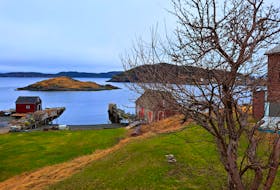All of us folks from Labrador West whether we are outdoor folks and migratory bird hunters or not, share the arrival of the Canada geese with the same enthusiasm. It sends a clear signal from the natural world that spring is arriving, just around the corner.
The arrival of spring is always welcome. This year, perhaps a bit more welcome than the normal year. Winter started early last fall and blessed us with a long, cold and snow-filled season that tested even the strongest of us people of the north. There is more snow in the woods and ice on the water than is normal for us, based on the calendar date.
There is no better indicator to us than the arrival of the geese to Labrador West. For those of us who have been here for a while, we know the normal process. The Geese will arrive in smaller flocks at the narrows, spend a day or two on the ice having a rest and feeding on the grass over on the tailing areas. Situation normal, in and out, make room for the next bunch as they head north toward their nesting areas.

Not this spring. They just kept coming and not going. I am not sure how they know, but somehow instinctively they knew that everything north of us was still frozen over so they just stayed. More and more just kept coming and kept staying.
The gathering of the geese at the narrows and the Tamarack extension was of historical numbers. I talked to a number of folks who have been in Labrador West for 40 years or more and have never witnessed anything like this year’s numbers.
The snow dump was a constant gathering place for folks to go and have a look at the Geese in little Wabush Lake. The geese were cooperative and were not at all camera shy. The entire community had their time with the geese. There were days that there were upwards of 1,000 geese gathered at once. They sure created a stir for us, young and old and everyone in between, to celebrate spring in a very big way in spite of the weather.
I’m not sure if this large and extended layover with us will have any negative effect on the geese for this season. They have a great deal of work to do in a short time.
These birds have to nest on the ground, usually on the elevated mounds on the ponds or bogs with water in them. They prefer areas where they can see unobstructed in all directions to see predators from a distance.
The female does all the incubation while her mate guards her and the nest. A normal year sees anywhere between two and eight eggs with one brood produced each season. The incubation period is 25 to 28 days. The hatchlings will leave the nest when they are 1 to 2 days old and can swim, feed and dive at that time. These birds usually mate for life and spend the whole year together.
Their summer this far north is a short season with many lessons in feeding, swimming and predator identification and required actions all indicated every day. All of these lessons as well as the rapid feeding and growth are critical components in having the young ones in a position to make the trip south in the fall.
It’s hoped that the later spring and their incredible layover with us sees the geese get through their summer and be able to have the year’s young ready to head south on time. Hopefully it’s a good year in hatching out big clutches that will see many of them return to us again next spring.
More by Gary Shaw:
Time to revisit the possession regulations of brook trout in Labrador?








